Blog:
Was 2012 the year of the prosperous publisher? What we know now

If 2012 was any indication, 2013 holds great promise for new revenue tracks, new partnerships and adapting to best practices to not just serve, but delight, audiences.

In early 2012, just about a year ago, we invited a half-dozen people with a range of unique roles in the news production mix, to identify the most crucial challenges facing publishers at that moment in time. No enormous surprise: Money was the top concern. More specifically, a collective sense emerged that publishers could benefit from a roadmap of the many small steps needed to increase and stabilize revenue across the industry.
As 2012 drew to a close, we once more turned to these insightful people (listed to the right), asking each to share what he or she learned over the course of this chapter in the evolving story of journalism. We also asked a number of other leaders across the industry to share what they learned in 2012. You’ll see excerpts in this post, with their full stories offered as a series that will post over the month of January.
Our “think group:” David Boardman, executive editor of The Seattle Times; Anne Galloway, founder and editor of VTDigger.org; Kevin Davis, CEO of the Investigative News Network; Block by Block founder and Knight Community Information Challenge Circuit Rider Michele McLellan; policy expert-turned-local-publisher Steven Waldman; business coach Joe Michaud; and The Patterson Foundation’s New Media Initiative Manager Janet Coats; who together identified a number of cultural, practical and information-based obstacles publishers faced at that point on the path to sustainability.
Thanks to JA’s think group:

Steven Waldman
The Brooklyn Game
“Money needs to kick in”
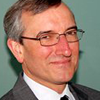
Joe Michaud
Local Interactive Strategies
“Nonprofit is a tax status”
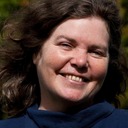
Michele McLellan
Block by Block
“Proficient at business”
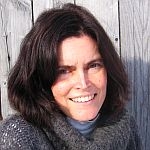
Anne Galloway
Vermont Digger
“It really is money”

Kevin Davis
Investigative News Network
“Support local”
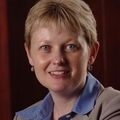
Janet Coats
The Patterson Foundation
“Tried and true methods”

David Boardman
The Seattle Times
“A very clear direction”
“We’re not there yet,” says Anne Galloway, publisher VTDigger.org, the independent investigative news organization covering Vermont. But for her, 2012 was a year of gaining practical knowledge about raising revenue – one of the specific publisher needs identified by our think group earlier in the year.
VTDigger broke a lot of ground as a business in 2012: revenue almost doubled, staff increased by 30% and sponsorships jumped. Galloway filed the nonprofits’ first 990 (tax forms) and held her first accounting review. She said she learned a number of specific skills in 2012:
- How to motivate salespeople. “It really is money,” she says. “We had to restructure the compensation system.” She also learned how to persuade reluctant board members to make a change.
- How to know what financial information she needs, and get it. “It’s a bit tricky. The office manager knows the cash flow, and bookkepers care about what happened in the past, not the future. My eye needs to be on both.”
- How to identify a specific need, in her case, increasing philanthropy. “I’m not sure I know how to make the ask effectively. We’re going to have to get more organized with donors.”
Steven Waldman also picked up a lot of practical publisher knowledge this year. He began 2012 leading policy discussions at major journalism schools around the country, spent much of the year trying to raise funds for a new Brooklyn community news organization, then started The Brooklyn Game when the Nets debuted as Brooklyn’s pro basketball team this fall. The Game has given him first-hand experience in the local news business.
“It’s very tough making a living on ads,” he said. “The ad rates on the networks are just so low.” And vetting new technology as a way to increase revenue has proved challenging. “Whether it’s Twitter or Instagram, FourSquare, Groupon…each promises to provide a new way for people to reach customers or readers. But so far none of them have provided a whole lot of help on the revenue side.”
Business training, culture changing
For independent news publishers, training opportunities sharpened their focus in 2012. Block by Block held its final business training known as “Super Camp” after three years guiding community publishers through very basic business skills. Block by Block founder Michele McLellan says small news publishers aren’t losing passion for their work, but gaining survival skills.
“I’d say 2010 was all about their passion for news, and for their communities. In 2011, I think they were starting to get practical – there was this recognition that you’re doing God’s work but that doesn’t mean the money follows. 2012 has been a lot about actually becoming proficient, or trying to become proficient, at business.”
Block by Block, the Investigative News Network and KDMC started a new training program in the fall: “Community Journalism Executive Training.” INN leader Kevin Davis says CJET helped publishers deepen and broaden their business understanding. For example, he said, realizing it takes investment to earn revenue. “While there was a recognition at the beginning of 2012 that they needed revenue, there wasn’t necessarily the skill set internally and the recognition of the cost of pursuing revenue,“ he said.
Business coach Joe Michaud says 2012 saw nonprofits shift their business thinking in profound ways. At the beginning of the year “nonprofits were totally focused on grants. That was going to be their entire sustainability model,” Michaud said. “By the time we got to CJET, there were people in the room whose thinking had evolved. Nonprofit is a tax status, not a business model.”
A major takeaway for trainers in 2012: Survival skills can be taught. “This is not some kind of arcane knowledge out in the crazy digital world that nobody has figured out,” says Janet Coats, The Patterson Foundation’s New Media Initiative Manager, who helped guide Super Camp and CJET. “There are tried-and-true methods and skills. We’ve seen in the course of this year that it can make the difference for some publishers between making it and not making it.”
2012: Lila LaHood, Mark Glaser & John Garrett on “what we know now”
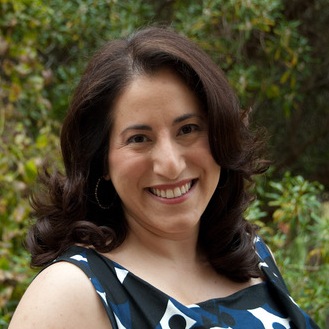 “We learned that we weren’t giving our supporters enough different opportunities to support our brand of local public-interest journalism.” – Lila LaHood, Publisher, San Francisco Public Press
“We learned that we weren’t giving our supporters enough different opportunities to support our brand of local public-interest journalism.” – Lila LaHood, Publisher, San Francisco Public Press
 “We expected that some students might want to help. But instead we had volunteers who were pretty high-level colleagues. That was a surprise.” – Mark Glaser, Executive editor of PBS MediaShift and Idea Lab
“We expected that some students might want to help. But instead we had volunteers who were pretty high-level colleagues. That was a surprise.” – Mark Glaser, Executive editor of PBS MediaShift and Idea Lab
 “The most important thing I have learned this year is that a reader’s need and desire for quality through relevant and useful local content is stronger than ever.” – John Garrett, Publisher & CEO, Community Impact Newspaper
“The most important thing I have learned this year is that a reader’s need and desire for quality through relevant and useful local content is stronger than ever.” – John Garrett, Publisher & CEO, Community Impact Newspaper
Legacy learnings
Coats helps legacy newspapers and public media organizations while also breaking new ground to support start-up publishers. She says 2012 confirmed for her that “the sustainability issue really is the same set of problems no matter your model or your size.” But bigger news organizations take some different tactics. For example, paywalls swept legacy publishing in 2012.
Despite the flurry of virtual walls, The Seattle Times executive editor David Boardman said it’s clear digital subscriptions are not a “magic bullet” offering a single source solution. But he said paywall experiments did help demonstrate that some consumers will pay more for news.
“I think the biggest thing that’s happened in 2012 is the emergence of a very clear direction for our industry in that regard. I think we all see that the successful and ultimate business model is going to rely far more heavily on the consumers of news and information paying a lot more for it. Along with that, we need to come up with effective advertising revenue and other streams of revenue, because that consumer pay is not going to entirely replace what we’ve lost in print advertising.”
Another major change in legacy operations: the emergence of a major market three-day-a-week publication replacing a daily. Boardman is not convinced that is a business model to follow.
“The three-day-a-week model has the stench of erosion and contraction and failure and surrender. I’m optimistic we can evolve to something that feels far more proactive and logical and progressive,” Boardman said.
He saw partnerships emerge in 2012 as a better trend to follow, in part because readership, although much may be unpaid, is growing. “All sorts of companies want to take good advantage of the enormous audiences we can still provide for them. And they can offer us slices of their revenue. I think we all realize it’s all about slices of revenue now. It’s all about lots of different streams versus the big fire hose that print advertising represented for so long.”
Janet Coats agrees. “If there’s something to watch over the next 18 months to two years, it’s what happens around partnering. I think people are starting to realize that you really can’t do it all on your own. True partnership relationships that are focused on: How do you leverage the strengths of one organization and the strengths of another organization to create something that is more than the sum of the parts?”
2012: Dick O’Hare, Laura Rich & Dan Moulthrop on “what we know now”
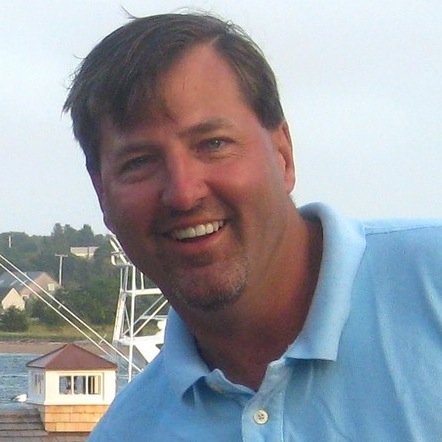 “Targeting audiences through data has marginalized the value of publisher content. … Digital advertising remains too complex. … We learned some valuable lessons this year that can only be learned by getting in the weeds.” – Dick O’Hare, CEO & Founder, Local Yokel Media
“Targeting audiences through data has marginalized the value of publisher content. … Digital advertising remains too complex. … We learned some valuable lessons this year that can only be learned by getting in the weeds.” – Dick O’Hare, CEO & Founder, Local Yokel Media
 “It’s not just about the revenue. To be a useful media brand, especially in the B2B sector, you need to match the needs of your customers.“ – Laura Rich, Co-founder, Street Fight
“It’s not just about the revenue. To be a useful media brand, especially in the B2B sector, you need to match the needs of your customers.“ – Laura Rich, Co-founder, Street Fight
 “The curation metaphor gets thrown around a lot lately, and its usefulness might be winding down, but what we mean by it is that the conversation is intentional.” – Dan Moulthrop, Curator of Conversation, The Civic Commons
“The curation metaphor gets thrown around a lot lately, and its usefulness might be winding down, but what we mean by it is that the conversation is intentional.” – Dan Moulthrop, Curator of Conversation, The Civic Commons
A missing piece
Starting a startup in 2012, Steven Waldman says he found a business model missing. For-profit investors just look at the bottom line, he learned, while nonprofit donors consider temporary community needs. “I come away from this year thinking that there’s a missing piece to the puzzle. That there needs to be financial institutions or funds or strategies that create low profit but sustainable local media companies,” he said. “There’s only so long you can go on enthusiasm before money needs to kick in.”
Consultant and coach Joe Michaud sees revenue as just one still-elusive piece. He predicts that in 10 or 20 years publishers will look back on 2012 as a chaotic time. “The way I look at the chaos isn’t, ‘How are we going to pay for this,’ but, ‘What is the role of the journalist in the community?’”
2012: Keith Hammonds, Mike Fancher & Josh Stearns on “what we know now”
 “Produce content that’s relevant; connect it to mechanisms that help citizens and communities make change; articulate a value proposition and (not least) ask to be paid.” – Keith Hammonds, Director of Ashoka’s Knowledge Initiative
“Produce content that’s relevant; connect it to mechanisms that help citizens and communities make change; articulate a value proposition and (not least) ask to be paid.” – Keith Hammonds, Director of Ashoka’s Knowledge Initiative
 “News businesses – emerging or legacy, large or small – won’t be relevant and economically viable if journalists don’t feel a personal responsibility to make public engagement a core tenet of their work.” – Mike Fancher, former executive editor, The Seattle Times, author of “Re-Imagining Journalism: Local News for a Networked World”
“News businesses – emerging or legacy, large or small – won’t be relevant and economically viable if journalists don’t feel a personal responsibility to make public engagement a core tenet of their work.” – Mike Fancher, former executive editor, The Seattle Times, author of “Re-Imagining Journalism: Local News for a Networked World”
 “As the non-commercial media sector grows in influence and importance, it’s time to build a more connected and collaborative vision for non-profit media in America.” – Josh Stearns, Journalism and Public Media Campaign Director, Free Press
“As the non-commercial media sector grows in influence and importance, it’s time to build a more connected and collaborative vision for non-profit media in America.” – Josh Stearns, Journalism and Public Media Campaign Director, Free Press
On to 2013
David Boardman agreed that the “ultimate goal” now, from both a journalistic and business perspective, is real engagement. And from new consumer commitments to subscriptions, to new newsroom practices, he sees it “really happening.” Our “think group” shared a sense of optimism for the future of news, with evidence of specific new business skills among publishers, engagement awareness rising among legacy journalists, increasing audiences and emerging knowledge of how to structure success.
But as the industry continues to face rapid change, the gains of 2012 are layered with some uncertainty and concern. For example, Janet Coats said she sees too little use of mobile among community news publishers. Kevin Davis said the real question in his mind is whether, when the turbulence settles, there will be enough news outlets to make a difference.
“If only the big players survive, I don’t believe there is going to be enough. We need to make sure there are success stories at every level, that the business models support local and community-based journalism, not just national.”
What might be the big question in 2013? Michele McLellan laughs. “What am I going to find out I didn’t know? Given the speed of continued change, there’s likely to be plenty of new knowledge to go around.”
The second in this series of lessons from 2012 posts next week and will offer the fuller stories contributed from the additional thought leaders woven throughout this post. Building off these lessons, and your own insights from the year now gone by, what do you want to learn in 2013? What specific things are you excited to try?












Weigh In: Remember to refresh often to see latest comments!
0 comments so far.